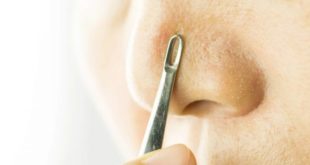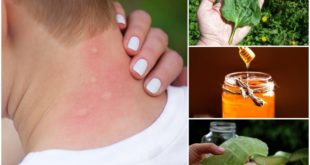
Bee sting is not that dangerous, at least for the people who are not allergic to insect bites including wasp and bee sting. Most of the time, bee stings only produce local reactions that include pain, redness and swelling at the site where bee has stung. Severe allergic reactions to bee sting that affect the whole body occurs to people who are allergic to bee venom. Such severe allergic reactions to bee sting is known as anaphylaxis or anaphylactic reactions. In such a case, the bee sting victim shows such symptoms as difficulty in breathing, hives or red, itchy rashes on all or various parts of body, swelling of face, throat, or mouth, wheezing or difficulty in swallowing, restlessness and anxiety, increased pulse rate, dizziness or a sharp drop in blood pressure. If you have been stung by a bee and experience such severe reactions, you need immediate medical assistance. Whether you are allergic to a bee sting or not can be ascertained through allergic testing. It’s better to avoid being stung by bee or wasps if you are allergic to their venom because this may be life-threatening for you. However, if you are not allergic to bee venom and if your symptoms are only localized like redness, pain and inflammation at the site of bee sting or around it, you may use natural home remedies for bee sting to get relief.
Home Remedies for Bee Sting
1. Apply Ice or Cold Pack as First Measure for Bee Sting
Of course, after taking out the bee stinger that stuck into your skin. Unlike the stingers of wasps, yellow jackets and hornets, honey bees have barbed stinger which get stuck in the victim’s skin along with its venom sack. So, first task is to take out this stinger, carefully, may be with the help of tweezers or simply by holding with nails. After taking out the stinger, wash the site properly and apply ice or an ice pack. It constricts your blood vessels so that the venom may not freely flow into your bloodstream. It also numbs the skin giving you relief from pain and itching.
How to Apply Ice for Bee Sting?
- Get some ice and a clean cloth.
- Wrap the ice in the cloth.
- Place this ice pack against the site where bee has stung.
- Hold it for about 10 minutes. If the ice melts in between, add some more ice.
- After 10 minutes, give a break for 10 minutes.
- Again make an ice pack and apply for 10 minutes.
- Repeat after every 4-5 hours.
2. Use Toothpaste for Bee Sting
This is a little unusual remedy but toothpaste effectively alleviates the symptoms of bee sting. There are at least two reasons for this. One, there is glycerin in toothpaste which seems to dry out the venom, if any, left at the area where bee stung. Secondly, as toothpaste is alkaline in nature, it helps neutralize the acid left by bee venom. Just dab a little toothpaste at the site where bee has stung you. You will feel cool and even tingy but in a few minutes, it will give you a soothing relief. Repeat after 3-4 hours.
3. Baking Soda Paste for Bee Sting
One of the very effective remedies for bee sting is a paste made with baking soda and water. Bee venom has formic acid which is also known as methanoic acid. As the bee venom is acidic in nature and the bicarbonate of soda which is an alkali can neutralize its effect reducing the pain too.
Get this:
- Baking soda- 1 tsp
- Water- enough to make paste
Do this:
- Add water to baking soda to make a paste.
- Apply this paste on the area where bee has stung.
- Leave it to dry.
- You will instantly feel a soothing relief due to the cooling effect of baking soda.
- Repeat 3-4 times a day.
4. Papaya for Bee Sting
Papaya has many beneficial enzymes that also make it a good remedy for venomous bee sting. There is this papain enzyme found in papayas that help neutralize the effect of the venom. While all types of papaya, raw or ripe, have papain enzyme, the green raw papaya has most of it. Many people use meat tenderizer to treat bee sting. In fact, meat tenderizer have this papain enzyme in them that may make them suitable for bee stings.
How to Use Papaya for Bee Sting?
- Take a slice of papaya and rub this on to the site of bee sting.
- You may also grate the papaya and take out its juice. Apply this juice on the affected area.
- If you have a ripe papaya, you may mash it and apply the mashed lot on your bee sting site.
5. Mustard for Bee Sting
Mustard has been used since ancient times to treat bee sting and other insect bites. Apart from being rich in antioxidants, mustard has a goos amount of selenium which makes it a fine anti-inflammatory agent. You can use mustard to get relief from swelling and pain brought by bee sting.
How to Use Mustard for Bee Sting?
- Take some mustard powder and sprinkle over the area of bee sting.
- You may also use mustard seeds.
- To make a poultice of mustard, take some mustard powder and add water to make paste. Place this mustard paste in a thin cloth and wrap it. Hold this mustard poultice against your skin where you have been stung by bee.
6. Honey for Bee Sting
What an irony! Honey which is made by bees can be used to treat its sting! But that’s true. Honey is a known natural anti-bacterial ingredient. Its antibacterial properties saves you from infection and also relieves you of swelling and pain.
How to Use Honey for Bee Sting?
Just take some honey and apply this to the area where bee has stung you. Let it be there for few minutes before washing. Repeat multiple times during the day.
7. Plantain Leaf for Bee Sting
The very common plantain leaves that you can find in your backyard too has been traditionally used for cuts, rashes, insect bites and even snake bites. Its natural anti-bacterial and anti-inflammatory properties make it a great herbal remedy for bee sting as it relives swelling, pain and itching too. The broad plantain leaf contains tannin which is an astringent that helps draw tissue together to heal wounds.
How to Use Plantain Leaf for Bee Sting?
- Get a plantain leaf.
- Wash it properly and chew some of it, just don’t swallow it.
- Take out the chewed plantain leaf and apply this to your bee sting site.
- Saliva, which is also anti-bacterial, mixed with the herb will give you relief and prevent any infection.
8. Basil Leaves for Bee Sting
The natural anti-bacterial properties of basil leaves that are granted to it by its volatile oils are capable of restricting the growth of a wide array of bacteria. The eugenol compound of basil leaves make it naturally anti-inflammatory too. All these properties of basil make it a good remedy for bee sting. You can crush some basil leaves and apply on your site of bee sting. Ayurveda uses basil in combination with yet another anti-inflammatory substance turmeric to treat stings.
Make Basil-Turmeric Paste for Bee Sting
Get this:
- Basil leaves- handful
- Turmeric powder- 1-2 tsp
Do this:
- Crush the basil leaves to get its paste.
- Add turmeric to basil leaves paste and mix well.
- Apply this paste to the affected area.
- Repeat 3-4 times a day.
9. Parsley for Bee Sting
Parsley also has many volatile oils in it, one of which is eugenol compound which gives basil its anti-inflammatory properties. This also makes parsley a good remedy for bee sting as it also contains infection from spreading.
How to Use Parsley for Bee Sting?
- Crush some fresh parsley.
- Apply the paste to your affected area.
- You may use a cloth or bandage to hold the parsley poultice against your skin. Remove it after some time.
- Repeat 3-4 times a day.
10. Lavender Oil for Bee Sting
Many essential oils have anti-inflammatory and antihistamine properties. Lavender oil is one of such essential oils which is also antipruritic meaning it relieves itching too. You can get rid of swelling, pain as well as irritation by using lavender oil. Just rub a little lavender onto the affected area. You may also make lavender oil at home as it is very easy to make. Here’s how you can make it.
How to Make Lavender Oil?
Get this:
- Dried lavender flowers- ½ cup
- Any Oil (olive/jojoba/sunflower/sweet almond/sunflower/ grape seed oil)- 1 cup
- Cheese cloth
Do this
- Add lavender flowers to oil in a pot.
- Heat the oil, keeping the flame on lowest.
- Let it simmer for 2-3 hours.
- Allow it to cool down.
- Strain using cheese cloth.
- Store in a bottle.
11. Epsom Salt Remedy for Bee Sting
The white Epsom salt crystals contain magnesium and sulfate, the two substances that are known to reduce inflammation. They also relieve pain. However, the most important aspect of using Epsom salt for stings is that it helps draw the stinger to the surface of your skin. So, if you are not sure whether the whole stinger has been pulled out of your skin or not, you may use Epsom salt.
How to Use Epsom Salt for Bee Sting?
- Take some Epsom salt and water.
- Mix to make a paste.
- Apply this paste to the affected area.
12. Homemade Calendula Salve for Bee Sting
The orange yellow calendula flowers also known as pot marigold or garden marigold have been traditionally used to heal wounds. Calendula has anti-inflammatory, antimicrobial, astringent, and antifungal properties among many others that make it a perfect natural remedy for bee stings. You can make a salve using calendula flowers which you can use for various purposes too minor cuts, rashes, bruises, chapped lips, insect bites and bee sting too.
How to Make Calendula Salve?
Get this:
- Calendula flowers (dried)- ½ cup
- Olive oil- 1 cups
- Beeswax- ¼ cup
- Lavender essential oil- 20 drops
Do this:
- Before making salve, you need to make calendula herbal oil. You can even get ready-made calendula oil. You need half a cup of such oil.
- To make calendula oil, add calendula flowers to oil.
- Warm over low heat for 4-5 hours. You need to do it on low flame. You may use double boiler too.
- After the oil is heat infused, let it cool down.
- Strain using a cheese cloth.
- Now to make the salve, chop the beeswax.
- Take half a cup of your homemade calendula oil.
- Melt the beeswax mixed with oil in a double boiler.
- When it gets melted, remove from the heat and add lavender oil.
- Store in a jar.
- Let it cool down.
- Once it cools down, it will take the form of salve.
13. Marshmallow Leaves for Bee Sting
Marshmallow has very soothing properties. It contains a sticky substance called mucilage which makes it cool and soothing for skin irritation. They are also anti-inflammatory and will get you rid of swelling and pain brought on by bee sting.
How to Use Marshmallow for Bee Sting?
- Just rub the marshmallow leaves on the affected area.
- You may also make a paste of these leaves by grinding them in a food processor. Now apply this marshmallow leaves to the area where bee has stung.
14. Witch Hazel for Bee Sting
Witch hazel has been traditionally used for minor cuts, rashes and bruises. It also make a good remedy for bee stings due to its many properties. Witch hazel extract contains tannin, gallic acid, catechins, proanthocyanins, flavonoids, volatile oils like carvacrol, eugenol, and hexenol along with choline, saponins, and bitters all of which make it a good remedy for inflammation, pain and itching.
How to Use Witch Hazel for Bee Sting?
- Apply some witch hazel extract directly over the area stung by bee.
- You may also add few drops of lavender essential oil to witch hazel and apply for more effective remedy.
15. Rock Salt-Fennel Seed for Bee Sting
This is an Ayurvedic remedy using rock salt and fennel seeds, both effective in reducing inflammation and pain. Rock salt, like Epsom salt, is rich in minerals, especially in magnesium and selenium that help reduce swelling and pain. The main component of the volatile oil in fennel seed, on the other hand, is anethole. Anethole can effectively reduce inflammation. Here is how you can use both these ingredients to get rid of discomforts due to bee sting.
Get this:
- Rock salt- 1-2 tsp
- Fennel seeds- 1 tsp
- Water
Do this:
- Crush rock salt and fennel seeds to make powder.
- Add water to make a paste.
- Apply this to the affected area.
- Repeat 3-4 times a day.
16. Limewater-Choona for Bee Sting
Limewater or choona is the edible lime, also known as pickling lime or food grade lime and is commonly used in India for preparing flavored betel leaves called ‘paan’. This is yet another effective remedy for bee sting from India. There people use limewater for getting immediate relief from pain of bee sting as well as to contain the poisonous acid from spreading in the body. Choona or the pickling lime is highly alkaline and can neutralize acid effectively.
How to Use Limewater-Choona for Bee Sting
It is very simple to use pickling lime for bee sting. Just take it in little amount and apply to the area stung by bee. You may gently rub the affected area with this ‘choona’ to let it penetrate into the skin but do not rub for longer. Just a minute is all you need. Then let the lime water dry out on its own. You will feel soothing relief after applying the limewater. Repeat after every 3-4 hours.
17. Tobacco for Bee Sting
Tobacco may be injurious to health but it is quite useful when it comes to bee sting. Due to its high alkaline composition, tobacco neutralizes the acidic venom of bee. This helps reduce swelling, pain and other discomforts resulting from bee sting.
Get this:
- Tobacco (you may also use a cigarette to get tobacco)
- Water
- Bandage
Do this:
- If using cigarette, unroll it and take out the tobacco.
- Add a little amount of water to the tobacco so that it becomes just wet.
- Now mash the wet tobacco within fingers.
- In sometime, juice of tobacco will start coming out.
- Apply this tobacco giving out its juice to the affected area. You may place it on the site where bee has stung.
- Use a bandage to hold the tobacco there.
- Let it be there for about 10-15 minutes. Within this time, you will feel your pain going away.
18. St. John’s Wort Oil Remedy for Bee Sting
The flowers and leaves of St. John’s wort herb is used for medicinal purposes traditionally. St. John’s wort oil made with the herb is used for bruises, inflammation as well as muscle pain and bug bites. However, it cannot be directly used on skin and thus it can be mixed with bentonite clay, yet another natural ingredient beneficial in the case of bee sting. Bentonite can absorb toxins, heavy metals, impurities, and chemicals out of the body through adsorption. It also has an alkalizing effect on the body which neutralizes the acidic effect of bee sting.
Get this:
- St. John’s wort oil
- Bentonite clay
Do this:
- Mix St. John’s wort oil and bentonite clay to make a paste.
- Apply this to the bee sting affected area.
- Bentonite clay will pull the poison out of the body and the St. John’s wort oil will relieve pain.
19. Garlic for Bee Sting
Garlic has been acknowledges as one of the best medicinal herbs beneficial for many condition. Its antibacterial properties are well known. It also has anti-inflammatory properties which gives relief from swelling and pain.
How to Use Garlic for Bee Sting?
Get this:
- Garlic clove- 1-2
- Coconut or olive oil- 1 tsp
Do this:
- Crush the garlic cloves to get its paste.
- Mix the same with oil.
- Apply on the area of bee sting.
- Repeat 3-4 times a day.
20. Activated Charcoal for Bee Sting Remedy
This is one of the fastest remedies for bee stings. Activated charcoal functions on the principle of adsorption. It can be defined as an electrical action where the activated charcoal draws out most of the organic and inorganic chemicals that should not be there in the body, just like bentonite clay we had discussed earlier. When applied on bee sting, it pulls the poisonous elements out of the body giving you relief from pain and swelling.
How to Use Activated Charcoal for Bee Sting?
Get this:
- Activated charcoal
- Water
Do this:
- Mix some activated charcoal with water to make paste.
- Apply this to your bee sting affected area like a poultice.
- You may use a bandage to hold the poultice at place.
- Let the poultice be there for 10-15 minutes.
- If after removing the poultice, you feel uncomfortable, apply a new poultice made with activated charcoal and water.
- Keep on changing the poultice till you feel completely fine.
Whenever you are stung by a bee, your first step should be to apply ice and then go for any other remedies for bee sting given above.
Source: RapidHomeRemedies
 We are sharing information for knowledge. Presented by. SocialDiary.Net
We are sharing information for knowledge. Presented by. SocialDiary.Net



